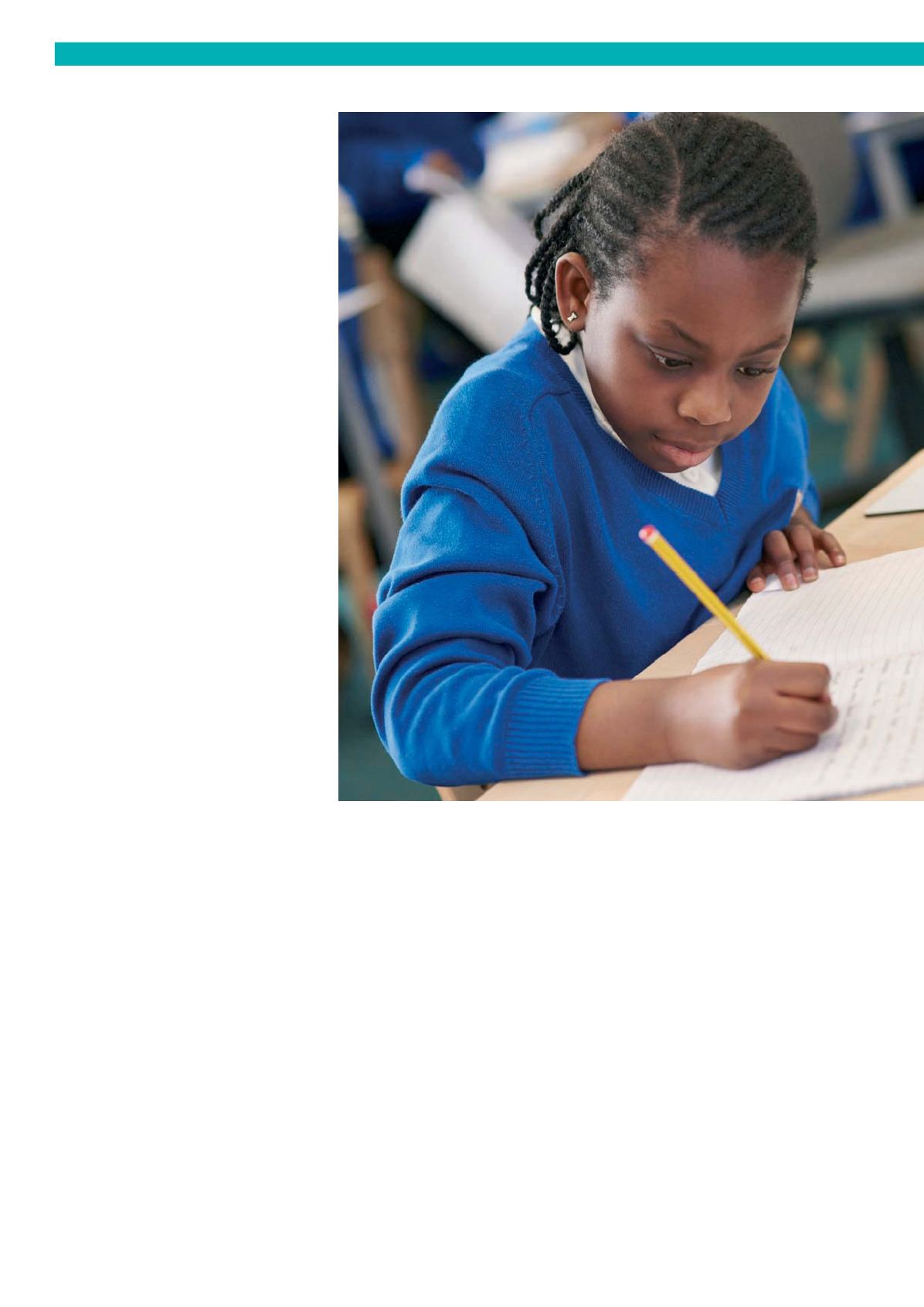
84
TEACH READING & WRITING
Itdoesn’thave
tobeboring
Ensuring that children are fully engaged in
writing and that they understand how to use
grammar and punctuation to good effect is
afine balance, but there are lots of ways to
achieve this in the classroom. Here are some
strategies that I’ve foundwork reallywell:
●
Choose a text-type that you can have
some funwith – adventure stories, spooky
stories, and twists on traditional tales (ditch
some of the oldNational Strategy narrative
units!). When it comes to non-fiction, how
muchmore enjoyable is it towrite instructions
for preparing aGruffalo’s tea than brewing a
common cuppa?
●
Create a high-quality hook to get your
children engaged in the text – just a small
investment in time can result in a big pay-off.
For example, scatteringGruffalo’s footsteps
at the classroomentrance .
●
Make sure that the children are familiar
with the text-type. Read, read and read –
immerse them.
●
Identify the grammar and / or punctuation
within amodel text; discuss the job that it is
doing – how is it enhancingmeaning? Label it,
teach it directly, and playwith it. For example,
playwith speech punctuation by providing
statements that children can punctuate
using punctuation fans or finger-actions;
or playwith fronted adverbials by providing
a sentence such as ‘John dug a hole’ and
asking children to suggest appropriate
fronted adverbials.
●
Continue to playwith grammar and
punctuation. Find it in other texts, discuss its
effect, and develop and extend examples.
●
Use sharedwriting tomodel what you are
looking for, step by step, section by section.
●
Keepmarking and feeding back during
thewhole process so that children’swriting
develops as they go along.
Planning a unit that brings together all of the
elements above is easy and I like to use the
tried and tested ‘circles planning’ approach
(around 2 – 3weeks’ work depending on the
age / stage of the children). This uses the
Teaching Sequence forWriting fromthe
National Strategies as its basis, and lays out
the key points that should be included in each
of three phases.
Phase 1:
●
Immersion in text
●
Shared reading
●
Enjoy, explore and resond to text
●
Develop comprehension skills
●
Identify language / genre features
Phase 2:
●
Gather ideas
●
Oral rehearsal
●
Plan
Phase 3
●
Sharedwriting
●
Teachermodelling
●
Teacher scribing
●
Supported composition
●
Guidedwriting
●
Independent writing
●
Draft, revise, edit
My planner contains three empty boxeswith a
‘final outcome’ box and three ‘key focus’ boxes
outside of this (see Fig. 1 for a completed
example). Once you have decided on the text
that the children are going to learn towrite,
and identified the key areas onwhich you
need to focus (e.g., grammar, vocabulary or
text structure), use these steps to plan a unit:
Step 1:
Complete the ‘final outcome’ box, e.g. Write an
information leaflet.
Step 2:
Enter the twoor three key focuses for the
unit (e.g. Effective use of cohesive devices
within paragraphs, and effective use of
brackets) into all three of the ‘key focus’
boxes.
Step 3:
Add your key focuses to the ‘final outcome’
box, e.g. Write an information leaflet making
effective use of cohesive devices within
paragraphs, and effective use of brackets.
Step 4:
List the activities that will be carried out
during the three phases, using the key points
fromthe Teaching Sequence forWriting
outlined above tomake sure that you are
covering each step.
Step 5:
Go through and slot in ‘key focus’ teaching –
this should be in every phase so that there


